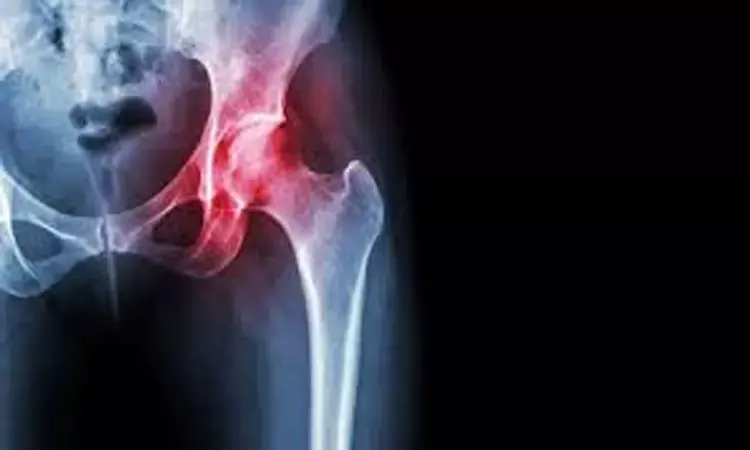- Home
- Medical news & Guidelines
- Anesthesiology
- Cardiology and CTVS
- Critical Care
- Dentistry
- Dermatology
- Diabetes and Endocrinology
- ENT
- Gastroenterology
- Medicine
- Nephrology
- Neurology
- Obstretics-Gynaecology
- Oncology
- Ophthalmology
- Orthopaedics
- Pediatrics-Neonatology
- Psychiatry
- Pulmonology
- Radiology
- Surgery
- Urology
- Laboratory Medicine
- Diet
- Nursing
- Paramedical
- Physiotherapy
- Health news
- Fact Check
- Bone Health Fact Check
- Brain Health Fact Check
- Cancer Related Fact Check
- Child Care Fact Check
- Dental and oral health fact check
- Diabetes and metabolic health fact check
- Diet and Nutrition Fact Check
- Eye and ENT Care Fact Check
- Fitness fact check
- Gut health fact check
- Heart health fact check
- Kidney health fact check
- Medical education fact check
- Men's health fact check
- Respiratory fact check
- Skin and hair care fact check
- Vaccine and Immunization fact check
- Women's health fact check
- AYUSH
- State News
- Andaman and Nicobar Islands
- Andhra Pradesh
- Arunachal Pradesh
- Assam
- Bihar
- Chandigarh
- Chattisgarh
- Dadra and Nagar Haveli
- Daman and Diu
- Delhi
- Goa
- Gujarat
- Haryana
- Himachal Pradesh
- Jammu & Kashmir
- Jharkhand
- Karnataka
- Kerala
- Ladakh
- Lakshadweep
- Madhya Pradesh
- Maharashtra
- Manipur
- Meghalaya
- Mizoram
- Nagaland
- Odisha
- Puducherry
- Punjab
- Rajasthan
- Sikkim
- Tamil Nadu
- Telangana
- Tripura
- Uttar Pradesh
- Uttrakhand
- West Bengal
- Medical Education
- Industry
Femoral neck system- an alternative for treatment of femoral neck fractures in adults

The femoral neck system (FNS) may be a valid alternative for treating femoral neck fractures, but few studies have compared the outcomes between femoral neck system and cannulated cancellous screws.
Femoral neck fractures improves hip functional recovery and reduces the femoral neck shortening rate and fluoroscopy exposure postoperatively. Thus, femoral neck system can be an alternative to inverted cannulated cancellous screws (ICCS) for the treatment of femoral neck fractures, finds a study, as published in the Journal of Orthopaedic Surgery and Research.
Yunfeng Tang and colleagues from the Department of Orthopaedics, West China Hospital, West China School of Medicine, Sichuan University, People's Republic of China aimed to compare the clinical efficacy and complications of femoral neck system with those of inverted cannulated cancellous screws (ICCS) for the treatment of femoral neck fractures in adults.
This retrospective study evaluated patients with femoral neck fractures who underwent femoral neck system or inverted cannulated cancellous screws internal fixation. The operative time, intraoperative blood loss, number of fluoroscopies, length of surgical incision, length of hospital stay, time to fracture healing, and other indicators were compared between the two groups.
The incidence of complications such as nonunion, avascular necrosis of the femoral head, loosening of the internal fixation, and shortening of the femoral neck during follow-up was also assessed in both groups.
The authors included a total of 92 patients, 47 and 45 patients were categorized into both defined groups, respectively. Follow-up ranged from 14 to 24 months. The study showed that there were no significant between-group differences in sex, age, side of the injured limb, and type of fracture and in operative time, intraoperative blood loss, incision length, and length of hospital stay.
Furthermore, the incidence of complications such as fracture nonunion, avascular necrosis of the femoral head, and screw loosening was also comparable between the two groups.
However, the number of fluoroscopies was significantly lower in the femoral neck system group than in the inverted cannulated cancellous screws group (P < 0.05). The fracture healing time was also significantly lower in the femoral neck system group than in the inverted cannulated cancellous screws group (P < 0.05). Furthermore, the femoral neck shortening and Harris hip score at the last follow-up were significantly better in the femoral neck system group than in the inverted cannulated cancellous screws group (P < 0.05).
As a result, it was concluded that femoral neck fractures can be an alternative to inverted cannulated cancellous screws for the treatment of femoral neck fractures.
For further reference, log into:
Tang, Y., Zhang, Z., Wang, L. et al. Femoral neck system versus inverted cannulated cancellous screw for the treatment of femoral neck fractures in adults: a preliminary comparative study. J Orthop Surg Res 16, 504 (2021). https://doi.org/10.1186/s13018-021-02659-0
Dr. Nandita Mohan is a practicing pediatric dentist with more than 5 years of clinical work experience. Along with this, she is equally interested in keeping herself up to date about the latest developments in the field of medicine and dentistry which is the driving force for her to be in association with Medical Dialogues. She also has her name attached with many publications; both national and international. She has pursued her BDS from Rajiv Gandhi University of Health Sciences, Bangalore and later went to enter her dream specialty (MDS) in the Department of Pedodontics and Preventive Dentistry from Pt. B.D. Sharma University of Health Sciences. Through all the years of experience, her core interest in learning something new has never stopped. She can be contacted at editorial@medicaldialogues.in. Contact no. 011-43720751
Dr Kamal Kant Kohli-MBBS, DTCD- a chest specialist with more than 30 years of practice and a flair for writing clinical articles, Dr Kamal Kant Kohli joined Medical Dialogues as a Chief Editor of Medical News. Besides writing articles, as an editor, he proofreads and verifies all the medical content published on Medical Dialogues including those coming from journals, studies,medical conferences,guidelines etc. Email: drkohli@medicaldialogues.in. Contact no. 011-43720751


